12 years of studying foreign languages with Anki

This year marks 12 years since I started using Anki for language learning. To be fair, I first tried Anki in 2008 (I don’t remember why), but I didn’t start using it actively until October 2012.
Learning foreign languages is one of my hobbies, and I’ve pursued it with varying intensity over the years. I use a variety of methods, including reading textbooks, completing courses, using apps, drilling grammar, and immersion. Anki has been one of the tools that has accompanied me throughout this journey and helped me learn several languages.
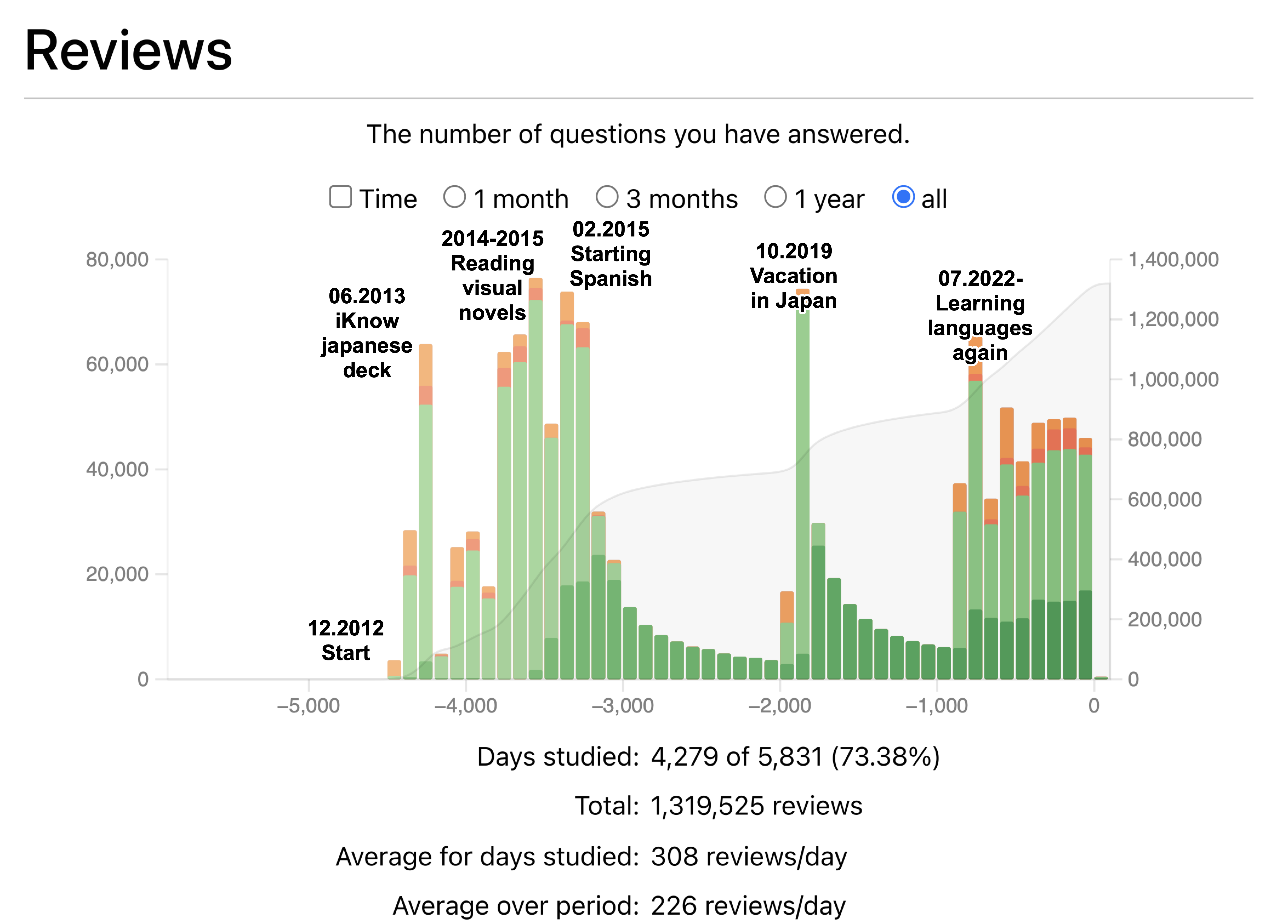
The trend in the number of reviews even reflects how my interests and life changed over time. I started using Anki at the end of 2012 and used it intensively to practice words from iKnow (I think the deck I was using at that time doesn’t exist anymore). Then I used different tools and even switched to learning German for some time, but finally, at the beginning of 2014, I became able to read native materials (even though it was pretty difficult). I started reading light novels and visual novels. A year later, I started learning Spanish (without abandoning Japanese).
In 2016, I decided to change my career and had to dedicate a lot of time for studying, so I stopped practicing languages. During this period, I didn’t add new cards and only reviewed the existing ones.
In 2019, I had a vacation in Japan with my friends, so I refreshed my Japanese. My knowledge wasn’t great after three years of neglect, but I could still read some signs and descriptions.
Finally, in the summer of 2022, I decided to focus on studying languages again and started adding new cards to Anki.
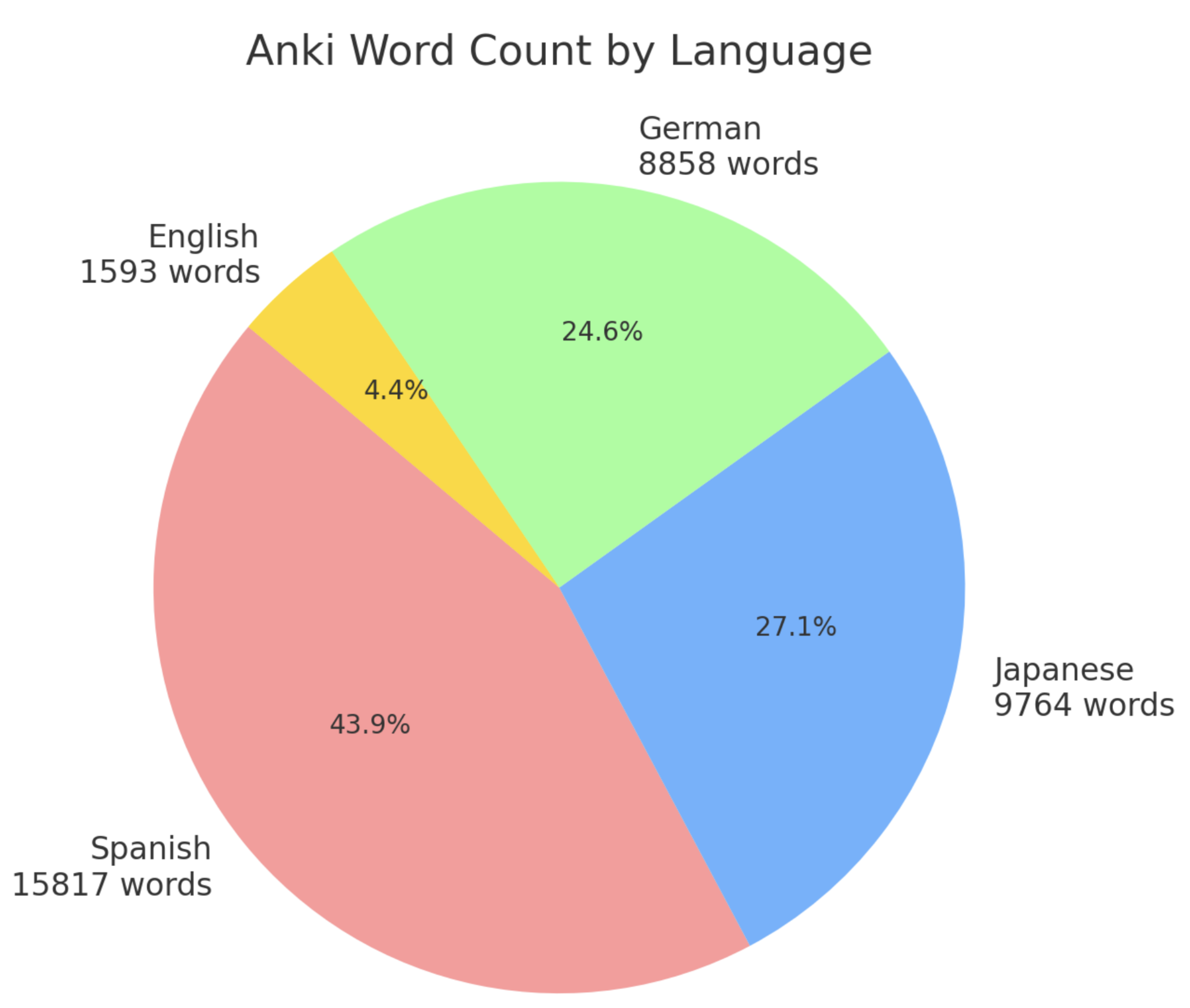
Most of the cards I’ve created myself, but I’ve also used some premade decks. The vast majority of my cards are dedicated to vocabulary, but I also have several decks for grammar.
Flashcards, Space Repetition, and Anki
One of the most effective ways to retain knowledge is by using flashcards combined with spaced repetition.
Learning a new word or concept once isn’t enough. You need to revisit and use it repeatedly if you want to remember it. Spaced repetition helps achieve this. The basic idea is to create flashcards with a question on one side and an answer on the other. Reviewing these cards regularly ensures the information sticks in your memory.
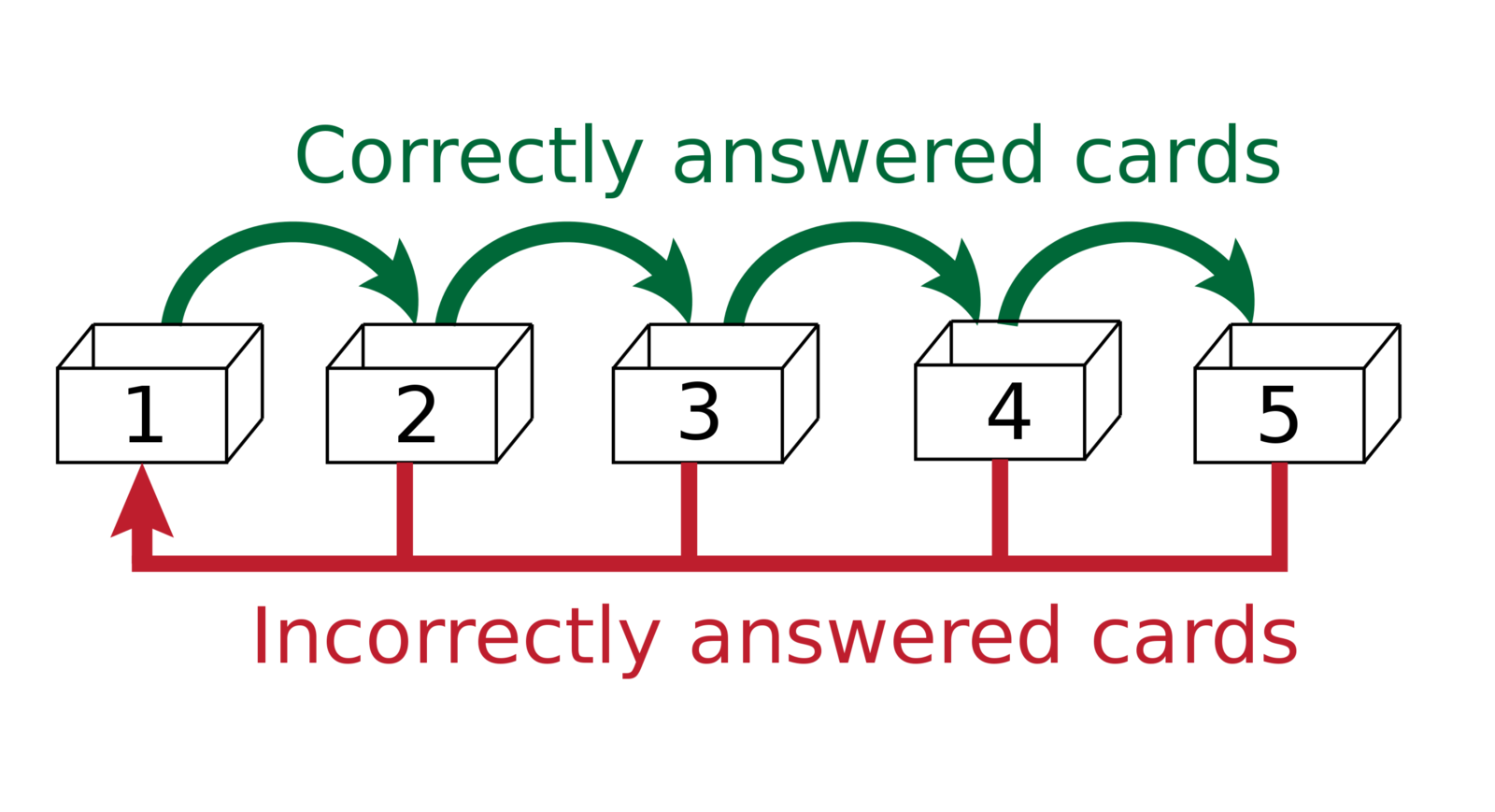
Sebastian Leitner introduced a more systematic approach to flashcards, now widely known as the Leitner system. In this method, you place flashcards into groups based on how well you know them. If you answer a card correctly, it moves to a pile reviewed less frequently. If you get it wrong, it returns to a pile reviewed more often. This approach helps you focus on the material that needs more attention while reinforcing what you’ve already learned.
Anki - arguably the most popular app for spaced repetition - builds upon this principle by automating the review schedule. It calculates optimal intervals for reviewing each card based on your performance, making the process both efficient and manageable.
Card creation
My usual process for creating cards is semi-automatic while reading.
- Web reading: I use the Readlang browser extension to look up words.
- Books: I use my Kindle device, which allows instant word lookups.
- Games: I use DeepL’s screen capture and translation functions. Reading Japanese visual novels requires additional tools.
After that, I export the words, translations, and context sentences to create cards in Anki. For Japanese, some tools allow the creation of new cards directly from word lookups.
Automating or semi-automating card creation is a game-changer. On forums like Reddit, I often see people struggling because they try to create cards manually, spend too much time on them and lose patience. With automation, card creation becomes quick and sustainable.
That said, I always double-check translations—especially for tricky cases like separable verbs in German, which many translation tools can’t handle correctly. Context sentences are also crucial. Cards with only isolated words are harder to remember, and the same word can have different meanings in different contexts.
My decks
English
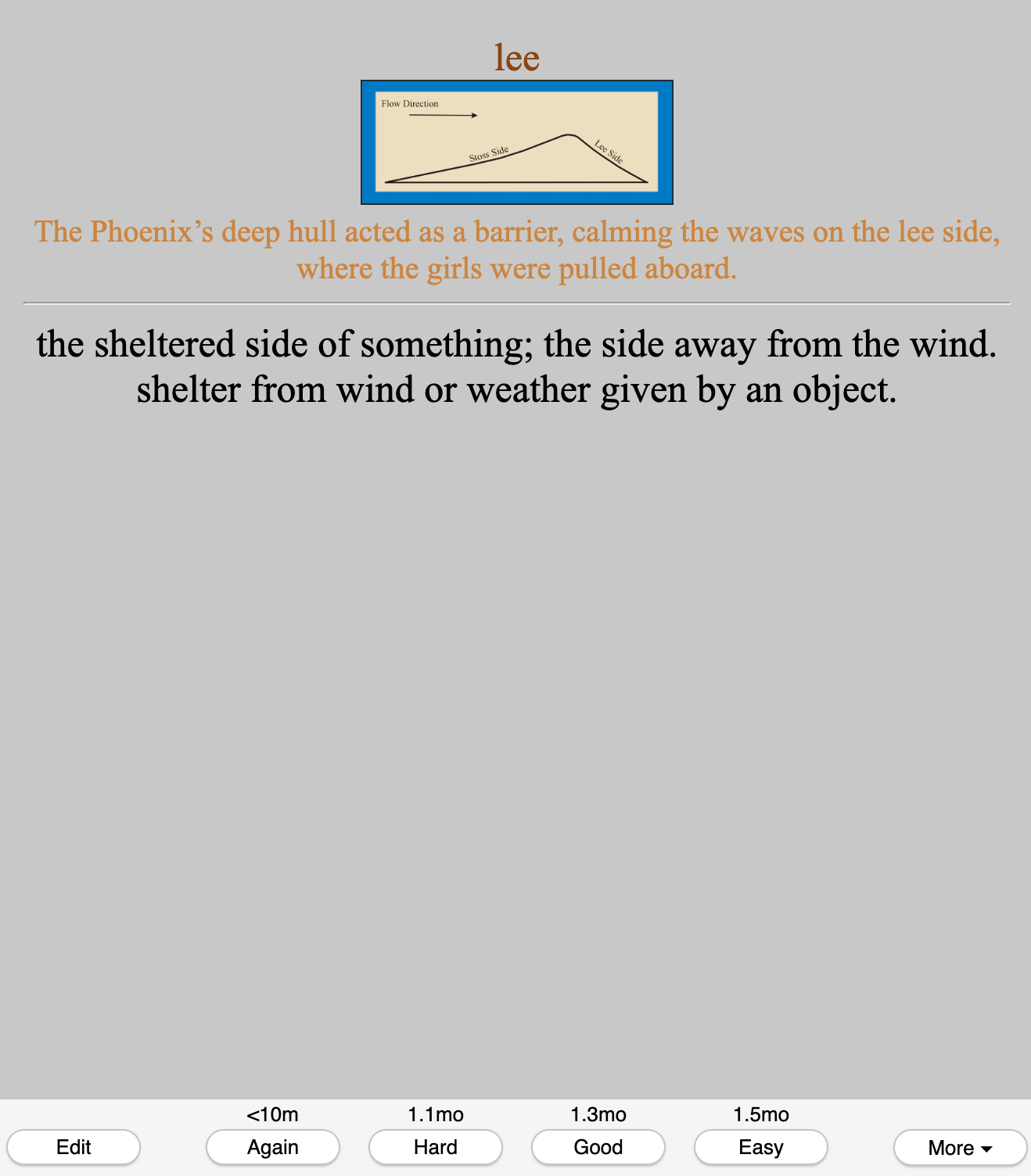
For English, I have a single deck where I add random words I encounter. Some of these are uncommon (e.g., “sumptuous”), while others are ordinary words I somehow missed before. Each card typically includes the word, a translation or explanation, and a sample sentence (from context or found elsewhere). Sometimes, I add funny images to make the words easier to remember.
Japanese
Currently, I use three decks:
- Core 2.3k Anki Deck: This deck focuses on the most common and useful words. When I started using it, I deleted cards for words I already knew, decreasing its size by half. It’s an excellent deck, especially because of the accompanying audio, which helps with pronunciation and listening comprehension. I always prefer premade decks with audio.
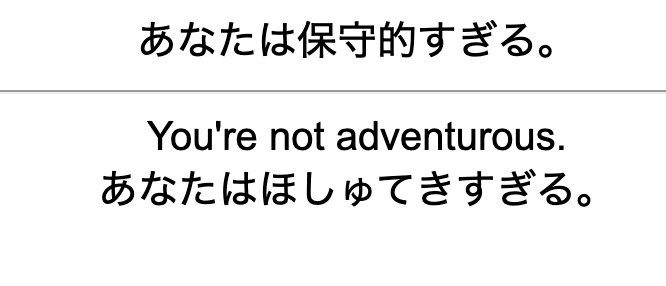
- Express Your Feelings in Japanese: A small but highly practical deck focusing on communication patterns. The translations are often non-literal but convey the intended meaning effectively, making it closer to real-life usage.
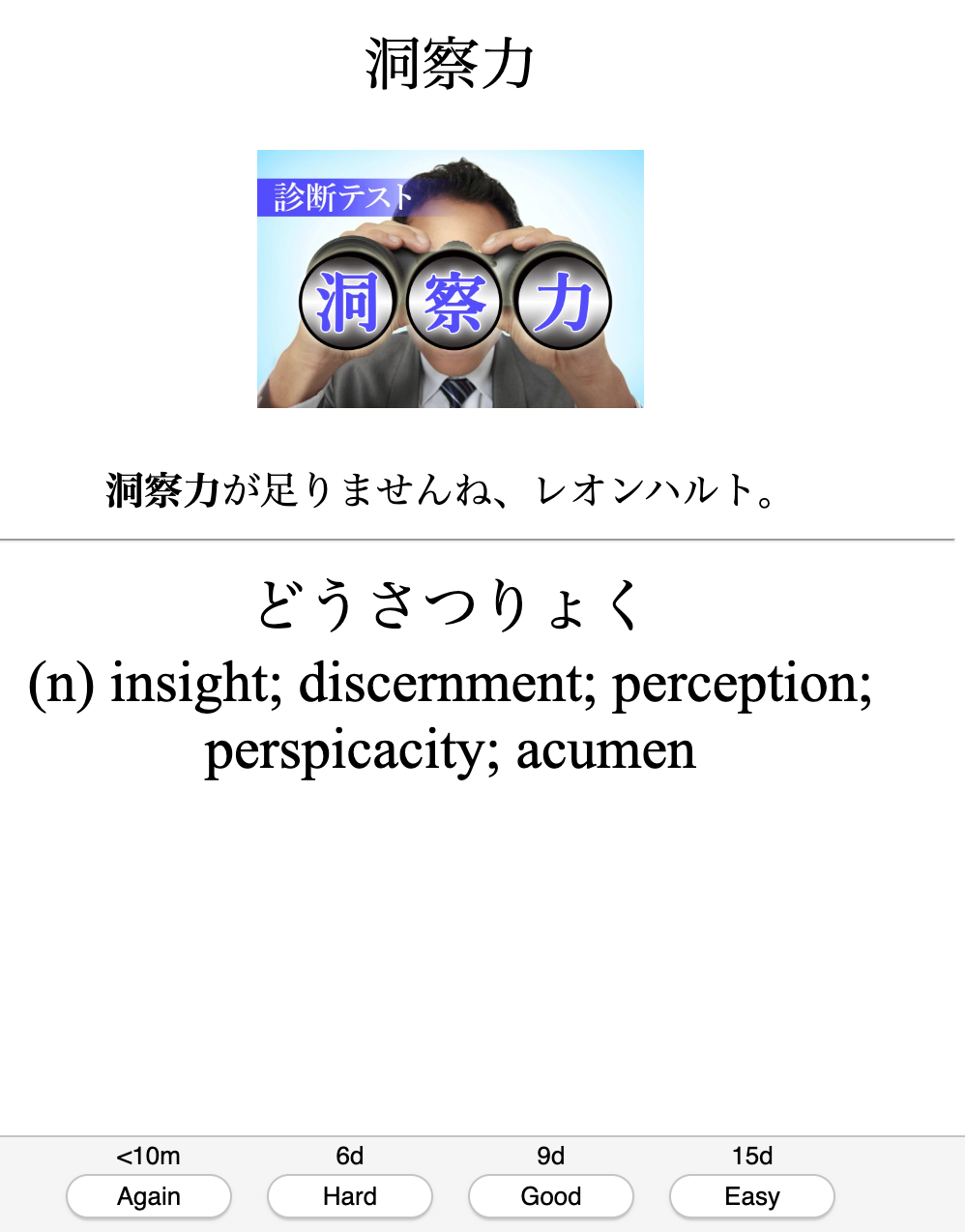
- My main deck: With 7.7k cards, this deck is my primary tool for practicing vocabulary. These cards were mined from light novels, visual novels, news articles, and other texts and were created using Yomichan (recently updated to Yomitan). The cards include the word, pronunciation, kana, and context sentence. Sometimes, I add images manually. I’ve reset this deck twice (October 2019 and February 2024), so most cards are new again.
Spanish
Over the last two years, I used two premade decks, which exposed me to diverse words and sentences. Thanks to the accompanying audio, I significantly improved my reading and listening comprehension. At my peak, I reviewed 200–400 sentences daily. I eventually deleted these decks when I felt I was spending too much time on them and switched to native materials.
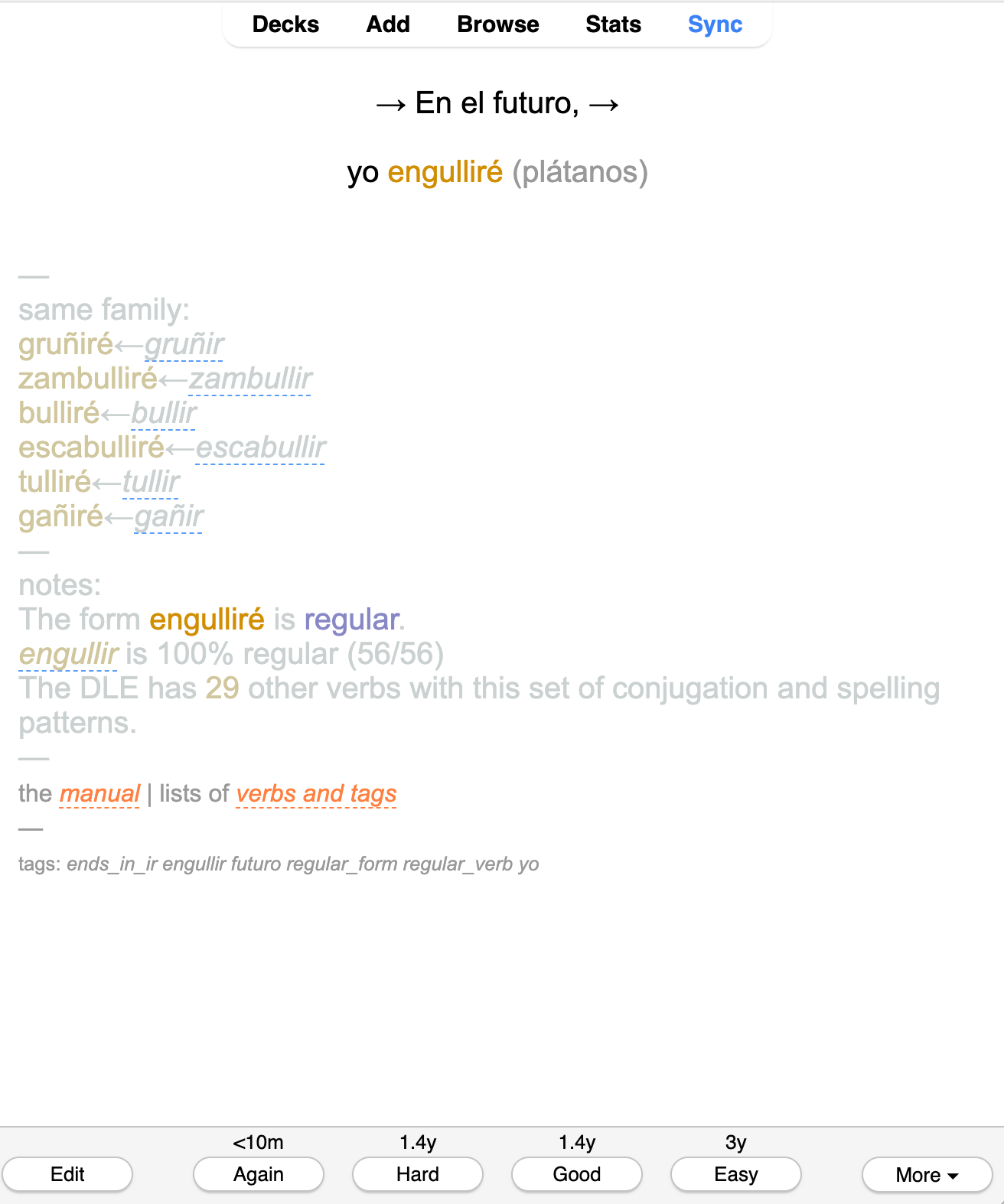
The most useful deck I still use is the Ultimate Spanish Conjugation deck. It’s phenomenal for drilling verb conjugations. You can read more about it here.
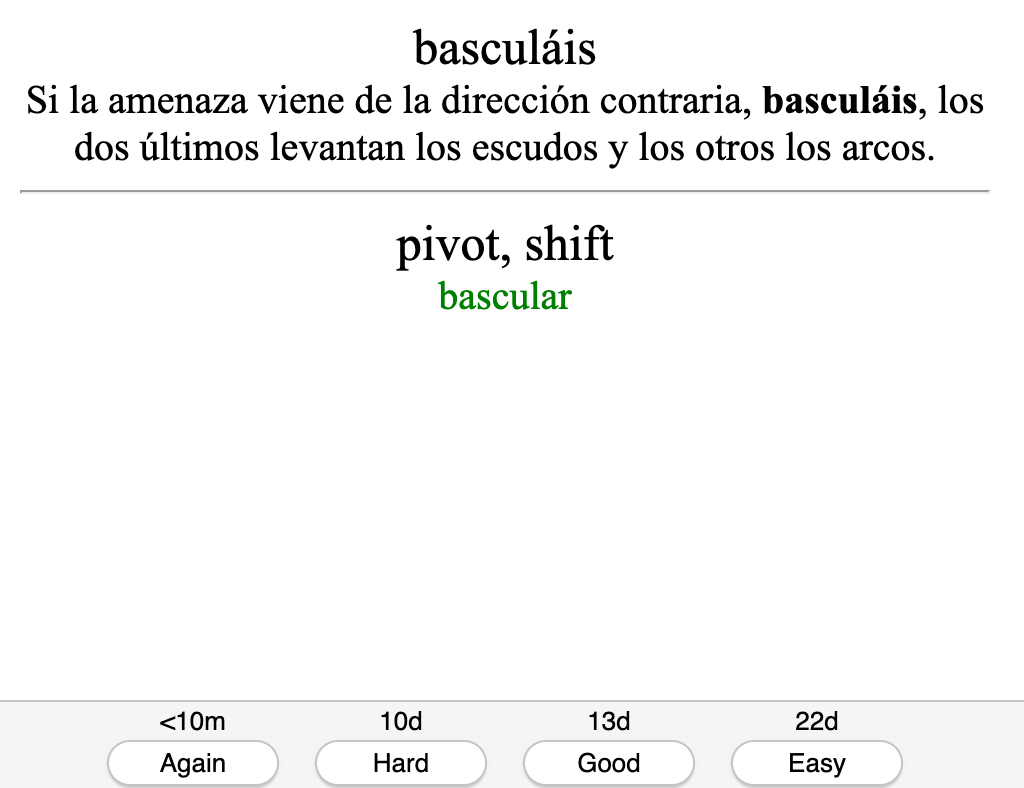
My main deck, now at 11.5k cards, primarily contains vocabulary from books read on Kindle and fanfics (while using Readlang).
German
For German I used this premade deck - the reason was the same as for Spanish. Additionally, I used a small deck I found somewhere to drill article forms.
My main deck has 8.8k cards created from books and news articles on Deutsche Welle.
Suggestions for Using Anki Effectively
- Make cards unambiguous: Avoid vague example sentences or confusing translations. Cards should be straightforward. Premade decks often suffer from vague examples.
- Use example sentences: Context matters, especially for complex languages like Japanese.
- Be selective: Don’t try to learn every unknown word. Focus on words you’ll encounter frequently. Naturally, one could think that it is critical to know all the words… but we don’t know all the possible words, even in our native language. So, if you encounter a name of a specific type of tree that you have never heard of, if you see yet another synonym of the same thing, if you see some very rare words, it is better do discard them. On the other hand, if you see the same “weird” word again and again in the media, you’ll learn it anyway;
- Develop a system: Anki allows you to grade your answers with varying levels of confidence. On forums, people often argue about the most efficient approach. I think any approach is fine, if you follow it diligently.